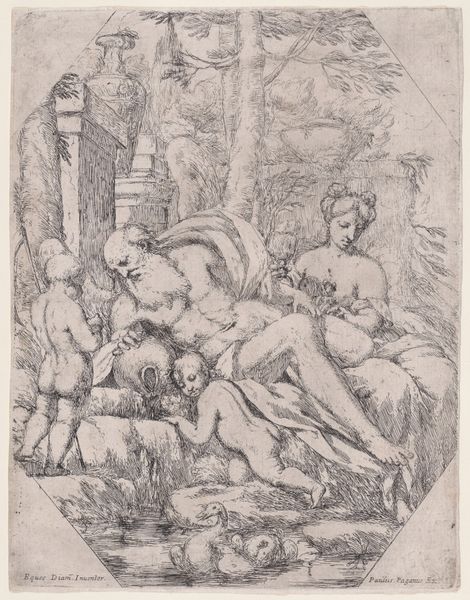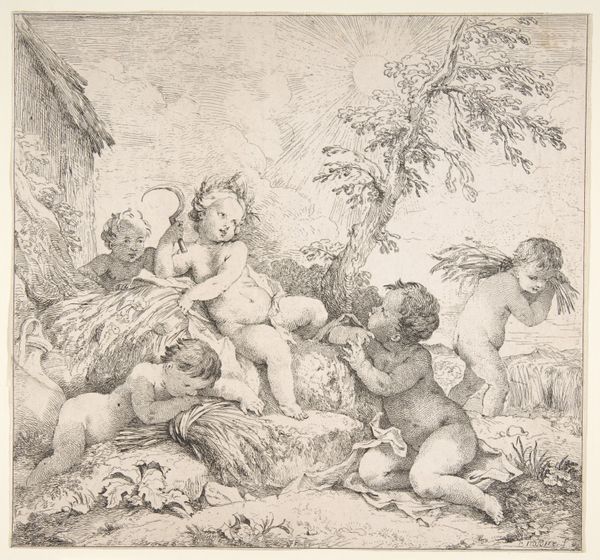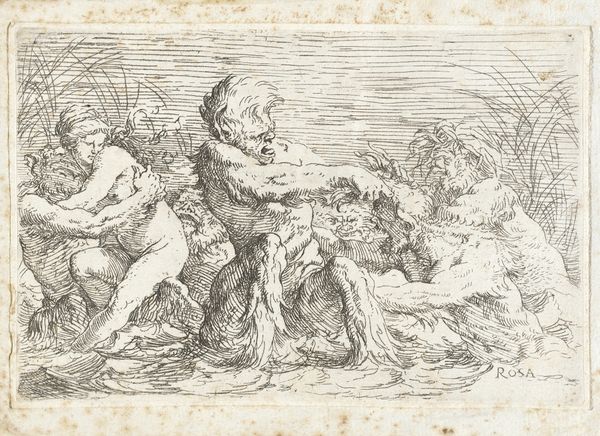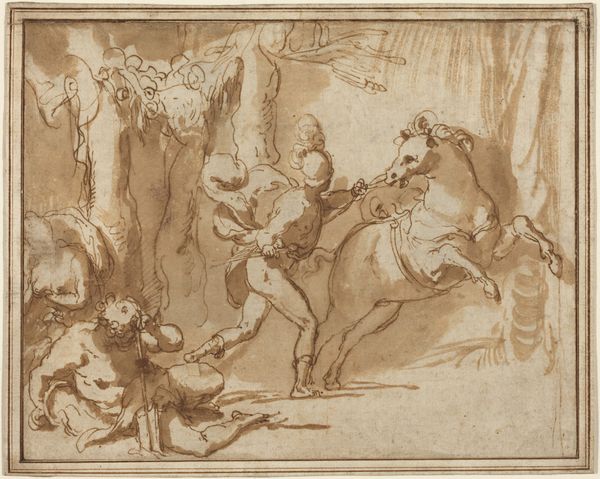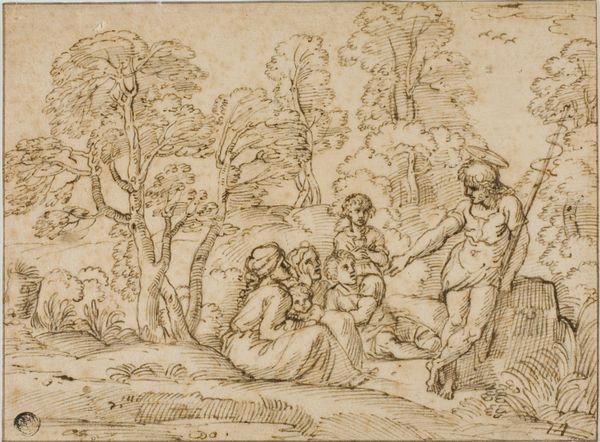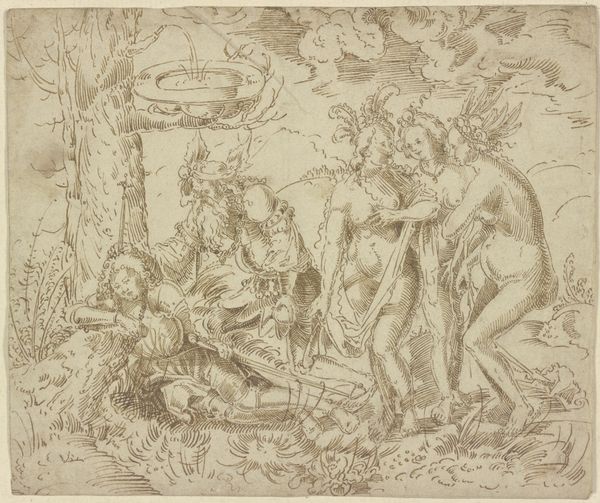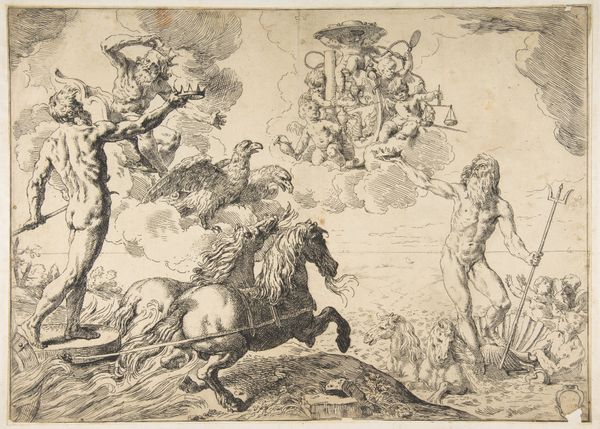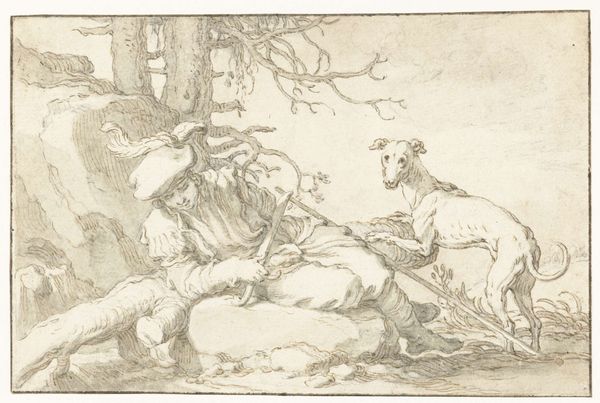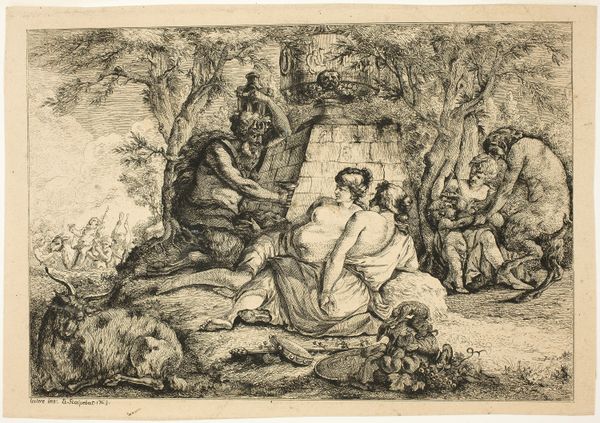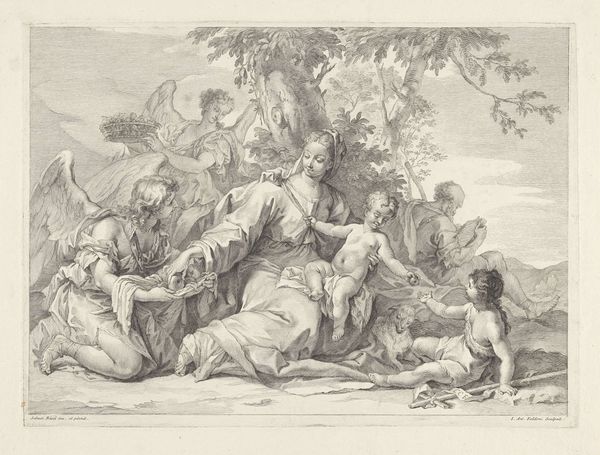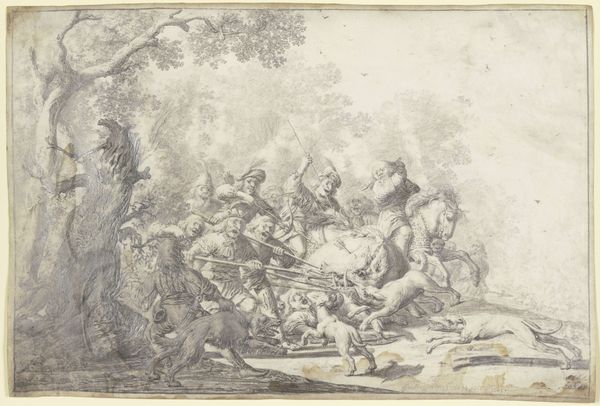
drawing, print, paper, ink, chalk, pen
#
drawing
#
medieval
#
allegory
#
narrative-art
# print
#
landscape
#
classical-realism
#
figuration
#
paper
#
ink
#
chalk
#
pen
#
genre-painting
#
nude
Dimensions: 189 × 208 mm
Copyright: Public Domain
Curator: Here we have a drawing titled "Diana and Endymion," whose artist is, unfortunately, unknown. It's a pen, ink, and chalk work on paper. What are your initial thoughts on it? Editor: It strikes me as dreamy. The soft chalk, the fluid lines, everything gives this a tranquil, almost ethereal quality. There's a gentle luminosity about it, as if we're witnessing a secret, hushed moment in nature. Curator: The figures depicted here speak volumes. Diana, goddess of the moon, is shown bestowing grapes upon the sleeping shepherd Endymion. The theme of divine love and mortality are central, ideas readily accessible during this artwork's time. One that touches on class and gender dynamics, to be sure. Editor: Precisely. It highlights a theme popular then but which, when viewed through today's lenses, makes us question agency, the power dynamics embedded within beauty, and idealised, passive femininity. Does Endymion truly have a say in this divine encounter? The two dogs seem to ask. Curator: That's a brilliant point. What's often overlooked, too, is the evolving visual representation of women over time, particularly in contrast with how women were actually treated. "Diana and Endymion" is fascinating because of this very disconnect—the idealized moon goddess in stark contrast with earthly expectations. Editor: The landscape, while minimally rendered, provides a symbolic backdrop too. The tree frames the couple. The very act of depiction also plays a crucial part, especially considering where it might've been displayed. Was it commissioned, publicly displayed or something more private? These considerations inform the narratives it presents. Curator: Certainly. Considering art history beyond aesthetics challenges traditional narratives. Looking at the institutions, patronage and socio-political influences around artworks like "Diana and Endymion" help us explore history with a modern critical eye. It isn’t merely about aesthetic pleasure, but societal reflection. Editor: Absolutely. For me, grappling with pieces like this really reinforces that art doesn't exist in a vacuum. "Diana and Endymion" remains fascinating, especially when considering questions around narrative control and power dynamics across time. It certainly prompts necessary conversations.
Comments
No comments
Be the first to comment and join the conversation on the ultimate creative platform.
